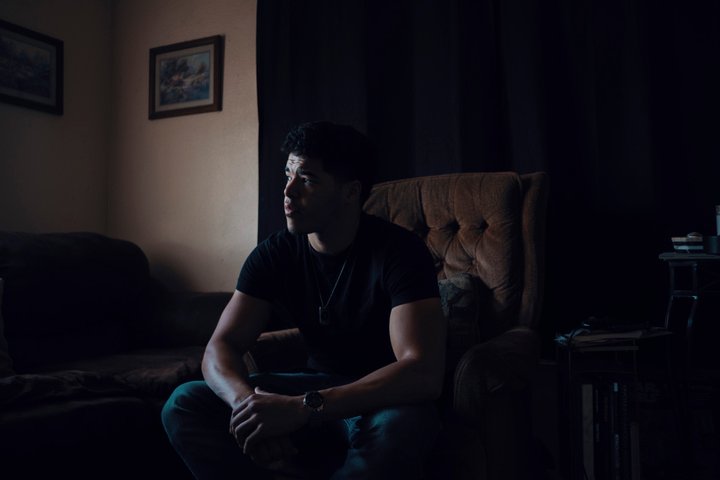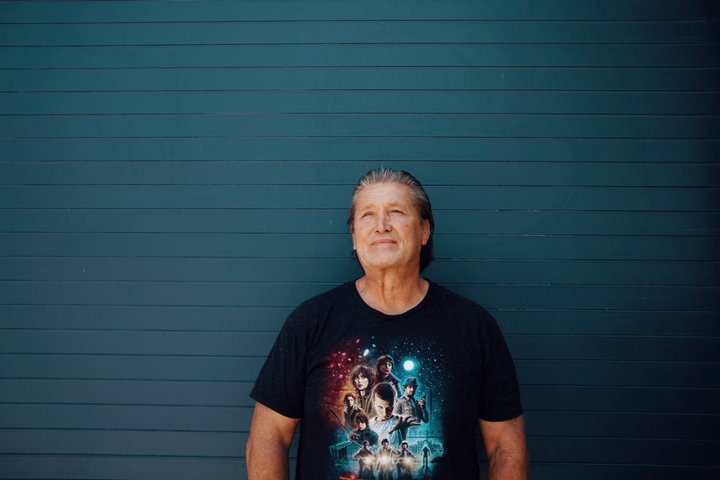A Collision of Epidemics: Coronavirus Disrupts Addiction Treatment


###
Breanna Dixon doesn’t remember struggling to breathe when she overdosed, but her younger brother Joshua hasn’t forgotten the sound.
At first, it sounded like heavy snoring coming from the TV room in the Dixon family home in Fontana, where the siblings were sheltering in place with their parents.
It had been a month since the novel coronavirus forced California to a standstill, and Dixon, 28, was struggling. She had already overdosed twice before in the two years she had used opioids. Stuck at home with her family and a soon-to-be-ex-boyfriend, she found herself using more than ever.
While other people were hoarding water and toilet paper, Dixon stocked up on oxycodone pills that turned out to be tainted with fentanyl, a dangerous, potent opioid.
“The stress of not knowing what’s going to happen in the world, and then on top of that having to deal with the little things inside my home,” she said. “I needed to cope with a lot of things, because I felt like I couldn’t fix it … and I felt like I already hurt my family so much.”
That night in April, Joshua Dixon, 23, could tell something was off with his sister, who pivoted from jittery to groggy. So at 4 a.m., when he heard what he thought was loud snoring, he checked on her.
He found her sitting up, her head drooping forward onto her chest.
“I looked closer, and I was like, okay that’s not snoring — so I kind of snapped into panic mode … started shaking her on the shoulder, like, ‘Wake up!’” Joshua Dixon said. “She wasn’t waking up.”
He called an ambulance, and paramedics revived her with naloxone, a drug that can reverse overdoses.
But the night wasn’t over: About an hour later, he found his sister’s ex-boyfriend crumpled in the backyard. He had overdosed, too.
A “collision of epidemics”
It’s a crisis that mental health experts worry they’ll see more often as people turn to illicit drugs to cope with the stressors of the pandemic. This “collision of epidemics” could magnify the dangers of both, according to warnings reverberating from scientific journals.
While the number of Californians killed by the coronavirus is tallied daily on public dashboards, its effect on illicit methamphetamine and opioid use is harder to track. Whether more people statewide are relapsing or overdosing is unclear.
But several local health departments in California as well as emergency rooms participating in a statewide treatment effort are seeing signs that fewer people addicted to drugs are receiving treatment since the pandemic reached California. The Public Health Institute’s CA Bridge Program reported 35% fewer people with opioid addictions in emergency rooms, dosed nearly 48% fewer people with medication to treat withdrawal and recorded 24% fewer people attending follow-up appointments, comparing April to January.
Experts worry that more people will fall through the cracks as the pandemic continues. And without increased state funding, budget cuts could hamstring their capacity to help.
“Fewer people are seeking treatment for services during this time period, but an increase in relapses has been noted for those who are involved in treatment,” said Jeffrey Nagel, director of Orange County’s Behavioral Health Services, which monitors trends at treatment providers.

The nation has seen it before: During previous economic downturns, more people died from opioid overdoses, but fewer people entered treatment for heroin addictions.
“There’s likely much more use of substances that we’re not capturing right now, either in hospitals or emergency rooms or jails,” said Gary Tsai, interim director of Los Angeles County’s division of Substance Abuse Prevention and Control. “There is a lot of concern that pent-up cases will materialize once our communities reopen. I think that’s a very real risk.”
The toll of opioids has been increasing in California over the past two decades. More than 4,386 people died from drug overdoses during the first nine months of 2019, about half from opioids, according to the state’s preliminary count.
It’s too soon to know whether more Californians are overdosing since the pandemic began.
Fresno has seen a surge in suspected overdose deaths, although the exact numbers are unavailable, said Rais Vohra, the county’s interim health officer. Many other coroner’s offices said there are too many bodies awaiting toxicological tests to identify any pattern. “I really think this is the tip of a bigger iceberg,” Vohra said.
“Feeling irrelevant” in the time of COVID
The “collision of epidemics” endangers people who use drugs on multiple fronts. They face increased risks from respiratory infections if smoking and vaping drugs has damaged their lungs or if opioids suppress their breathing.
But the virus’s social-distancing measures also tear the fabric of medical care and social support for people who use drugs, Nora Volkow, director of the National Institute on Drug Abuse wrote in a recent paper.
“Feeling irrelevant, feeling that no one cares for you, is probably one of the most devastating feelings a human being can have,” Volkow said in a recorded videoconference. It can “increase dramatically the risk of taking drugs, and, if you are trying to stop taking drugs, it increases that risk of relapse.”
Weeks before Breanna Dixon overdosed in Fontana, Crystal Acosta in Oakland said she was thinking of quitting drugs, and 60-year-old William Smith was relapsing in Los Angeles.
Acosta, 33, who first took heroin when she was 11, lived in a tent with her partner as the pandemic intensified. She fears what she’ll do if drugs become scarce, struggles to stay safe on the streets and worries about their son, who lives with his grandfather.
“When you do heroin, you get sick and it’s bad when you don’t have those drugs,” she said. “I’ve been thinking about getting clean, just to not have to deal with that.”
Acosta said she had been treated with methadone, which can help reduce cravings and symptoms of withdrawal. But it was expensive to travel to a clinic on the bus, so she stopped going.

Some 370 miles to the south, in Los Angeles, the pandemic kicked off a chain reaction that led Smith, a former cast member on the TV show Celebrity Rehab, to relapse.
Smith said he’d been in show business for years and worked for a drug cartel, but first tried heroin when he was incarcerated in Chino. He had been in recovery on and off for about 20 years when the coronavirus began creeping into California.
He was working as a caregiver, but the job was coming to an end, and with it, his housing.
With his future uncertain, he relied on Narcotics Anonymous meetings to keep sober. “Worst thing I can be is bored and by myself,” he said. “That’s when you jump up and go to a meeting, and you start listening to people’s woes and problems … It’s camaraderie, and friendship.”
But the pandemic forced his meetings online, and he ran out of cell phone data for Skype. His prescription for a medication that curbs opioid cravings and blunts the high tapped out. “For a couple days, you’re okay,” he said.
And then, he wasn’t. He started smoking heroin and methamphetamine again. “I felt terrible, I knew that’s not the way I wanted to be,” Smith said. “And I knew the way to get back.”
New cracks in the road to treatment
Dr. Reb Close, an emergency medicine physician at Community Hospital of the Monterey Peninsula, is trying to track the number of people like Dixon, Smith and Acosta whose drug use has changed with the pandemic.
Typically her department’s record system alerts her to one overdose roughly every three days. (It’s not the total, more of a preliminary snapshot.) But in May, alerts surged to an overdose a day, she said.
“You’ve got the experimenters,” Close said, recalling a teen boy who overdosed on what was likely an opioid. His mother started CPR until the cops arrived with naloxone, which can reverse overdoses. The boy later told Close he’d tried the drug because he was bored sheltering at home.
By Close’s count, three of 22 people who overdosed in March said their drug use was related to the virus. In April, it was seven out of 16. She hasn’t crunched numbers for May yet.
“You’ve got your substance use fragility of recovery,” Close said. And, with the pandemic, she said, “You have the fear, the hopelessness, the desperation.”
Smith knew where to go when he relapsed. His friend helped him find a bed at Tarzana Treatment Centers.
“I really didn’t think they’d have Tarzana or any of these big treatment centers still open,” he said. “A lot of people would have died if they didn’t have Tarzana.”
The number of people seeking treatment at Tarzana increased from 2019 to 2020, and the centers have been racing to add beds to meet demand.
But since the beginning of this year, the number of people seeking care has dropped monthly.
It’s difficult to separate the effects of the pandemic from seasonal trends, since people seeking treatment typically spikes in January and February, said Jim Sorg, Tarzana Treatment Centers’ director of care integration.
But patients’ fear of the virus could be a reason for the decline. Smith was “a little scared to get around other people, of course, and I didn’t know how they would manage to keep us safe. I had to see it for myself.”
What he saw were mask requirements, constant cleaning, multiple temperature checks per day, no outside meetings or visitors and as much social-distancing as possible.
Smith said that the changes haven’t hurt his recovery — they may have even helped.
“The fight against COVID is like the fight against addiction, so one hand just clasping the other,” he said. “It’s watching out for your neighbor, so your mind is constantly on something that’s positive.”
Officials in some counties with historically high numbers of overdose deaths report declines in people seeking or being admitted to treatment this year. Included are Sacramento, Santa Clara, Orange, San Diego, Riverside and Alameda counties. San Bernardino also saw an initial drop, although the numbers began increasing in May.
Part of the reason could be that federal rules have changed during the pandemic to allow people to take home more methadone at a time, which means fewer visits tallied at clinics. One woman told CalMatters that it made getting her medication much easier.
Some people may also not be accessing outpatient services due to closures or fewer referrals, including from courts and schools. Some residential programs are limiting admissions to maximize social distancing, and a shift to telehealth could have lost those who lack access to a phone or the internet.
“Generally speaking, lockdown equals lack of access to critical services,” said Nevada County’s Behavioral Health Director Phebe Bell. “What we’re seeing is that people continued to be fearful of in-person services, but needed help with their substance use.”
In some areas, people are seeking more treatment from addiction medications. San Francisco’s street medicine team reports writing two to three times more prescriptions than usual, while Los Angeles, Nevada County and a major Santa Clara County hospital also reported increased demand. Bell suspects that medication, which requires little in-person interaction, may feel like the safest option during a pandemic.
A worrying precedent during a recession
The picture of how the coronavirus will affect Californians addicted to drugs is still developing — but history can help bring it into focus.
One study led by Temple University economist Catherine Maclean reported that during economic downturns, treatment admissions for stimulants increased by almost 8% for every one percentage point increase in state unemployment. But for heroin, they dropped 6%.
Previous research showed an increase in opioid-related deaths and emergency department visits in economic slowdowns.
Combined, Maclean said the results suggest an increased unmet need for treatment — particularly for opioid addictions — during recessions.
The gap between need for treatment and access to it worries Aimee Moulin, an emergency medicine physician at the University of California Davis Medical Center.
The CA Bridge Program, where Moulin is a principle investigator, aims to close that gap. Patients at 50-plus hospitals who are addicted to opioids are immediately treated with buprenorphine, a medication to ease symptoms and cravings, and are connected with ongoing care. Over the past year, the program offered buprenorphine to 9,666 patients, and treated 6,207.
“Now we see people coming back — they couldn’t get their treatment appointment. There’s a lot of delays, a harder time getting medications,” Moulin said. “If it was a struggle before, it is so much more exacerbated by closing down or pulling back on a lot of those resources.”
Breanna Dixon is one of the people who could have benefited from the CA Bridge Program.
The night she overdosed, an ambulance took her to a hospital. But eight hours later, she was back at home, sweating and crying on her mother’s couch. “I was withdrawing … I could feel it, so I was just like, ‘I’m going to use again,’ ” she said.
The period after being discharged from the emergency room is a dangerous one. A recent study reported that in the year after an opioid overdose, people are 100 times more likely to overdose again and die. Their likelihood of dying by suicide also increases 18-fold.
She searched for treatment programs that would take MediCal. It took her days to find a hospital where she could detox. The whole time, she said, her mother Jeannette Dixon kept telling her, “‘Just keep looking, keep looking.’”
Now she is in transitional housing after completing residential treatment.
“I miss her very much, but I know that this is good for her. She needs it,” said Jeanette Dixon, who has been in recovery herself for a crystal meth addiction since 2012. “Because who gets a third time — you know what I mean? She’s blessed.”

The state’s budget and crises collide
As the pandemic continues, treatment services are at risk of losing government funding.
Last year’s budget included $20 million to fund behavioral health counselors for hospitals. But California Gov. Gavin Newsom’s May budget revision scrapped it. The Legislature has proposed restoring it, but negotiations are ongoing.
In April, county behavioral health directors and 17 other groups sent a letter to the state Legislature seeking a hearing and emergency funding. So far, neither has happened.
Michelle Cabrera, executive director of the County Behavioral Health Directors Association, predicts a billion dollar shortfall for counties’ behavioral health programs by next summer, at the same time as the number of people who depend on them is projected to swell.
The Legislature has proposed chipping in $1 billion for counties but $600 million is contingent on receiving federal money. Cabrera estimated that only $230 million would trickle down to behavioral health programs.
“It’s not going to be enough to stave off some of the harder decisions we’re going to have to make,” Cabrera said. “We’re leaving humans in the lurch.”
“We’re people too. We’re not just addicts.”
In the meantime, in Oakland, Crystal Acosta is already falling through the cracks. In April, she talked about the pandemic as a reason to get clean. Two months later, she said she was smoking twice as much heroin as before. Living without shelter amplifies the problem.
“We’re people too. We’re not just addicts,” Acosta said in April. “All of us have no help, or places like a house. And we’d be doing a lot better if we did.”
Alameda County is trying to address homelessness and addiction with counselors at some of the hotels set up for people during the pandemic.
For Acosta, though, it hasn’t helped. She spent weeks in a hotel but now is back on the streets. Her partner received an offer of housing, Acosta said, but turned it down because there wasn’t space for her. Now, they crash at friends’ places or walk all night, smoking heroin.
“It helps me relax to the point where I’m OK to deal with all of it,” she said.
After her disappointment about being homeless again, she’s less interested in seeking treatment. “If they’re not even willing to help me,” she said, “what’s the point?”
###
CALmatters.org is a nonprofit, nonpartisan media venture explaining California policies and politics.
 Pathways Drug Rehabilitation Luxury Addiction Treatment & Detox Center
Pathways Drug Rehabilitation Luxury Addiction Treatment & Detox Center


